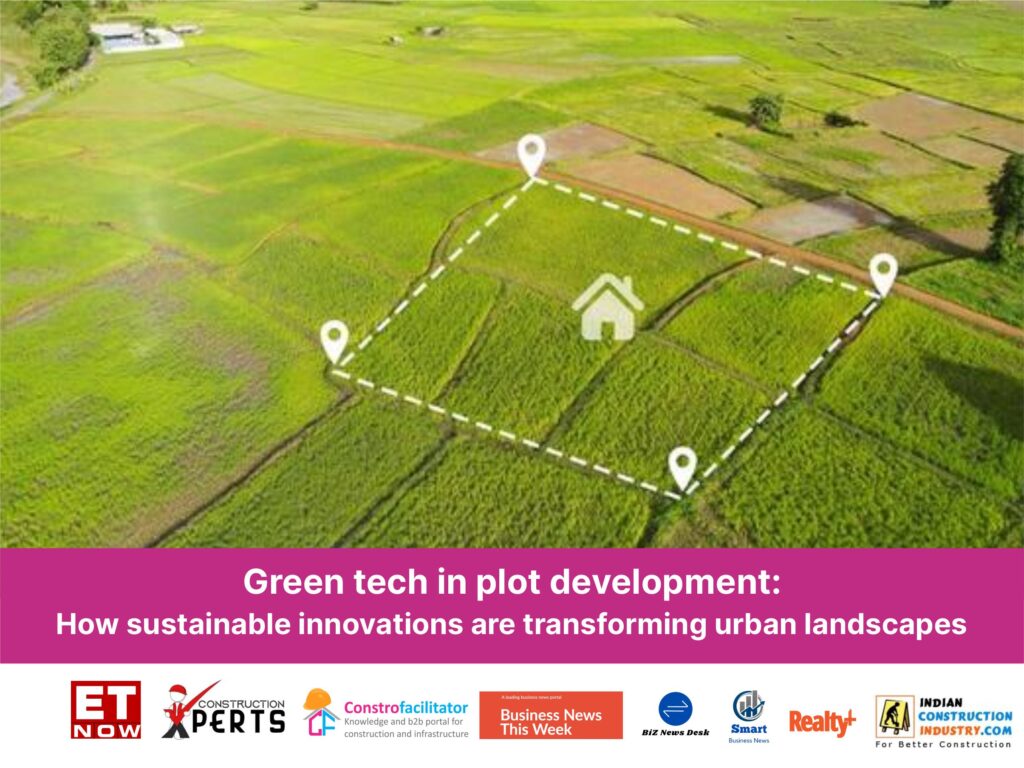
Gaurav K Singh, founder and chairman, Womeki Group discusses the impact of green tech in sustainable plot development
In recent years, the integration of green technology into plot development has emerged as a transformative force in shaping urban landscapes. As cities grapple with rapid population growth and the associated environmental challenges, sustainable innovations are becoming essential for creating resilient, livable spaces. From energy-efficient buildings to smart waste management systems, the application of green technology is redefining how urban environments are designed and experienced.
One of the most significant advancements in this arena is the rise of energy-efficient construction methods. Architects and developers are increasingly incorporating sustainable materials, such as recycled steel and bamboo, into their designs. These materials not only reduce the carbon footprint of new buildings but also enhance durability and aesthetic appeal. Moreover, innovations like green roofs and walls contribute to improved insulation, lowering energy consumption for heating and cooling. These features are not merely functional; they also promote biodiversity by providing habitats for urban wildlife, thereby fostering a connection between nature and city living.
Water conservation technologies are also playing a crucial role in sustainable plot development. Rainwater harvesting systems, permeable paving, and greywater recycling are becoming standard practices in modern urban projects. These technologies not only help manage stormwater runoff but also reduce the strain on municipal water supplies. By integrating these systems into new developments, cities can mitigate the impacts of urban flooding while promoting responsible water use. This approach aligns with the broader goal of creating urban areas that are resilient to the effects of climate change.
Transportation is another critical component where green technology is making significant strides. The rise of electric vehicles and the development of efficient public transit systems are essential for reducing urban air pollution and traffic congestion. Innovations such as bike-sharing programs and pedestrian-friendly infrastructure are encouraging more sustainable modes of transport. By designing cities that prioritize walking and cycling, developers are not only enhancing the quality of life for residents but also contributing to the overall reduction of greenhouse gas emissions.
Smart city technologies further amplify the impact of sustainable innovations on urban landscapes. The Internet of Things (IoT) is revolutionizing urban planning by enabling real-time data collection and analysis. This technology allows for more efficient energy use, improved waste management, and enhanced public safety. For instance, smart sensors can optimize street lighting based on pedestrian traffic, reducing energy consumption while ensuring safety. Additionally, waste management systems equipped with smart bins can monitor fill levels and optimize collection routes, leading to significant reductions in operational costs and environmental impact.
Community engagement is a vital aspect of successful sustainable plot development. Innovative green spaces, such as urban farms and community gardens, not only provide fresh produce but also foster a sense of community and belonging among residents. These spaces encourage social interaction and collaboration, transforming neglected areas into vibrant hubs of activity. The emphasis on inclusive design ensures that all community members can benefit from the advantages of green technology, promoting equity in urban development.
As cities continue to evolve, the importance of integrating green technology into plot development cannot be overstated. These innovations are not just about enhancing the aesthetic appeal of urban areas; they are essential for creating sustainable, resilient communities that can thrive in the face of environmental challenges. The shift towards sustainable urban landscapes is a testament to the potential of green technology to shape a better future for generations to come. By prioritizing sustainability in urban planning, we can create spaces that are not only functional but also harmonious with the natural world, paving the way for a more sustainable and equitable urban experience.
Featured on Construction Week Online.

